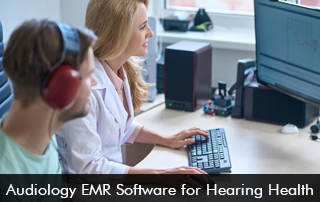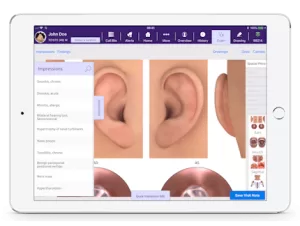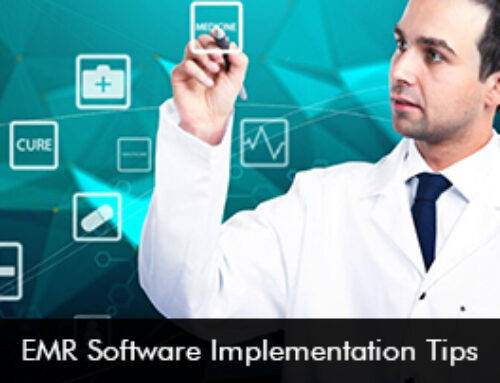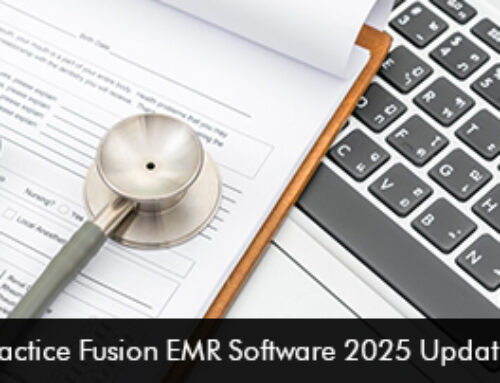EMR software tailored specifically for hearing health has changed the field of audiology for the better. They facilitate comprehensive patient management and contribute to improved clinical outcomes and operational efficiency. In this blog, we delve into the significance of Audiology EMR Software and its profound impact on the delivery of hearing healthcare services.
Understanding Audiology EMR Software
Audiology EMR software refers to specialized digital platforms designed to cater to the unique needs of audiologists, hearing healthcare professionals, and clinics. These solutions offer a centralized repository for patient data, including medical history, diagnostic reports, treatment plans, and follow-up appointments. By digitizing and organizing this information, Audiology EMR software optimizes workflow, enhances communication among healthcare providers, and ensures continuity of care.
Key Features and Functionalities
- Comprehensive Patient Profiles: Audiology EMR software enables audiologists to create detailed patient profiles, encompassing demographic information, medical history, audiograms, and relevant diagnostic test results. This consolidated view empowers clinicians to make informed decisions and tailor treatment plans according to individual patient needs.
- Diagnostic Tools Integration: Integration with diagnostic tools such as audiometers and tympanometers enables seamless transfer of test results directly into the EMR system. This eliminates manual data entry errors and expedites the diagnostic process, allowing audiologists to focus more on patient care.
- Appointment Scheduling and Reminders: Efficient appointment scheduling functionalities streamline clinic operations by minimizing scheduling conflicts and optimizing resource utilization. Automated appointment reminders help reduce no-show rates and ensure patients attend their scheduled appointments, thereby maximizing clinic efficiency.
- Billing and Insurance Management: Audiology EMR software simplifies billing and insurance management processes by automating billing code generation, claim submission, and reimbursement tracking. This not only accelerates revenue cycle management but also minimizes the risk of billing errors and compliance issues.
- Teleaudiology Capabilities: With the rise of telehealth services, many Audiology EMR platforms now offer teleaudiology capabilities, allowing audiologists to conduct remote consultations, hearing assessments, and follow-up appointments. This enhances accessibility to hearing healthcare services, particularly for patients in remote or underserved areas.
Benefits of Audiology EMR Software
- Enhanced Patient Care: By providing a comprehensive view of patient data and history, Audiology EMR software enables audiologists to deliver personalized and evidence-based care. Timely access to diagnostic information facilitates accurate diagnosis and timely interventions, leading to improved patient outcomes.
- Increased Efficiency and Productivity: Streamlined workflows and automation of routine administrative tasks boost clinic efficiency and productivity. Audiologists can devote more time to patient care instead of paperwork, resulting in shorter wait times, improved patient satisfaction, and increased patient throughput.
- Improved Communication and Collaboration: Audiology EMR software fosters seamless communication and collaboration among healthcare providers within the clinic as well as with external stakeholders such as primary care physicians and specialists. This interdisciplinary approach promotes coordinated care delivery and enhances patient safety.
- Data-driven Decision Making: The data analytics capabilities of Audiology EMR software empower clinics to analyze trends, track outcomes, and identify areas for quality improvement. By harnessing actionable insights from patient data, audiologists can refine treatment protocols, optimize resource allocation, and drive continuous improvement in clinical practice.
- Regulatory Compliance and Documentation Accuracy: Audiology EMR software helps clinics maintain compliance with regulatory requirements such as HIPAA (Health Insurance Portability and Accountability Act) and ensures accurate documentation of patient encounters. This reduces the risk of legal and regulatory penalties while safeguarding patient confidentiality and privacy.
Challenges and Considerations
While Audiology EMR software offers numerous benefits, its implementation and adoption pose certain challenges and considerations. These may include initial setup costs, staff training, data migration from legacy systems, interoperability with other healthcare IT systems, and ongoing technical support and maintenance. Moreover, ensuring data security and privacy remains paramount, given the sensitive nature of patient health information.
What the Future Holds for Audiology EMR Software
Looking ahead, the evolution of Audiology EMR software is poised to continue, driven by advancements in technology, regulatory reforms, and changing healthcare delivery models. Integration with emerging technologies such as artificial intelligence (AI), machine learning, and wearable devices holds the potential to further enhance diagnostic accuracy, personalized treatment planning, and patient engagement in hearing healthcare.








